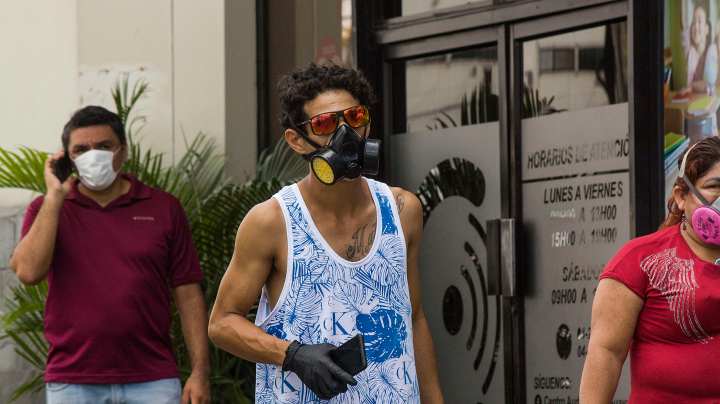Ecuador Is One of COVID-19’s Hardest-Hit Countries in the World

In Guayaquil they take more precautions due to the number of infected on April 13, 2020 in Guayaquil, Ecuador. Guayaquil is the epicenter of the COVID-19 pandemic in Ecuador, one of the worst-hit countries in South America. Photo by Eduardo Maquilón/Getty Images/Getty Images
Ecuador has been one of COVID-19’s worst-hit countries in South America. Earlier in the month, news emerged that the government had to prepare emergency plots in public cemeteries and find additional burial grounds on private land to accommodate the surge of fatalities in the northern region of Guayaquil. Some families reportedly had to keep the dead bodies of their loved ones in their own homes while they waited for more space to become available. Images of bodies left on the street or stored in makeshift cardboard boxes because of a scarcity in wooden coffins circulated online.
Such reports were indicators that Ecuador was completely overwhelmed, but it’s only this week that a New York Times analysis provides a more complete picture of how bad the situation truly is. Although the government had only attributed 503 deaths to COVID-19 as of April 15 (that number is now 576), the Times found that approximately 7,600 more people died this year than the average in recent years.
Not all of these deaths are from patients carrying the virus and “mortality data in the middle of a pandemic is inexact and can change,” the Times points out. One thing made clear by the data is the fact that the pandemic has wreaked havoc on the country’s healthcare resources and may have led to the deaths of people who couldn’t be treated as hospitals were suddenly faced with the crushing weight of infected patients. Accounts from doctors reflect this bleak reality.
“There were people dying at the doors of our clinics and we had no way of helping them,” Marcelo Castillo, head of an intensive care unit in a private hospital, told the Times. “Mothers, husbands, asking in tears for a bed, because, ‘You are a doctor, and you have to help us.’”

The data also reveals that in Guayaquil, total deaths in the first two weeks were eight times higher than usual death rates. That stands in stark contrast with New York, another epicenter, where deaths rose four times higher than the average. Ecuador’s population is reportedly relatively young and it’s unclear why the country has been particularly vulnerable. However, it does seem like a lack of supplies and coronavirus tests exacerbated the satiation farther.
“We will never know what the real number is, because there are no tests,” Cynthia Viteri, Guayaquil’s mayor, told the Times.
On April 24, Bloomberg reported that the country had more tests. As a result, the number of virus cases doubled. The government is also working on methods to stimulate its economy, which has been struggling since the president initiated a lockdown order in March. All of this means that getting a handle on the crisis might, sadly, still be far off for Ecuador.
